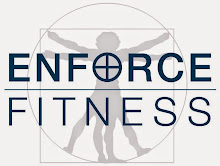
Myth - Common client question: I need to train my abs every day, right?
First, just which abs are we talking about?
There are four compartments of muscle that compose the core/ab musculature. When most people refer to their core or abs they are talking about the rectus abdominus, the abdominals they see in the mirror, that six pack every one craves. This is the muscle that is working when you do crunches or sit ups, the torso flexor. It is responsible for about 25 degrees of torso flexion, or bend. That's it. Any more than 25 degrees of torso bend and that muscle goes into an isometric (static) contraction and then your hip flexors take over to bring you the rest of the way up into that full sit up. Quick tip: Don't crunch all the way up. You can train that muscle much more efficiently by bending no more than 25 degrees. What's 25 degrees? Crunch up until your mid back is off the floor or ball. That is a good gauge.
Your abdominal muscles are skeletal muscles. They are intrinsically the same as all of your other skeletal muscles. They need rest as much as they need work. Therefore, when they are tired, they need to be rested. Proper rest is very important in increasing your fitness. In my training, with my clients, or when I workout, I usually work each muscle group to or near to exhaustion. This includes the abs (core). The abs are very crucial to the structural integrity of your spine. This is why we call them core muscles. They are active in virtually every movement you make, whether you're in the gym, coughing, doubling over in laughter or getting out of bed. They function not just to move joints, but also to support them, namely your spine. When you contract your abs, and I mean your entire core, bear down and exhale, your entire abdominal compartment contracts around your spine to support it. This is the main reason why your trainer tells you to exhale on exertion. In fact, if you are not breathing properly or holding your breath while performing an exercise, you are not allowing your core muscles to meet one of their key responsibilities; aligning and protecting your spine. If you isolate and exhaust these muscles one day and don't rest them for at least a couple of days, not only are they not capable of doing more work, i.e. stronger, they are not able to fully function as supporters of your spine. It is here that you are most prone to an injury. Weak, tired core muscles are the enemy of the healthy back. Rest. Take at least two days between isolated core workouts. Your back will thank you.
To be continued.....................








